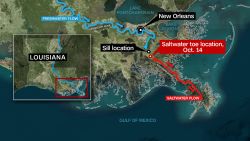Story highlights
Obama administration to announce new EPA standards that will set carbon emission limits on planes
The FAA says it's working with the EPA on the new proposals
The federal government is zeroing in on the carbon footprint of commercial airliners.
The Obama administration is gearing up to announce new Environmental Protection Agency standards that will set carbon emission limits for the commercial aviation industry, according to government officials who were not authorized to speak publicly on the matter.
It was unclear how much the new limits will curb carbon emissions, and the plan is expected to be announced within the next week.
President Barack Obama has called climate change an immediate national security threat, and his administration has been increasingly aggressive toward the goal of curbing effects of climate change. Earlier this year, the administration announced a plan to cut greenhouse gas emissions in the United States by up to 28% over the next 10 years.
Federal Aviation Administration Administrator Michael Huerta said his team is working with the EPA on the new proposals, but said it is important that the regulatory agency recognize the steps that are already being taken to reduce emissions by the FAA and the airlines, and that any regulations should be based on global standards.
RELATED: White House plans to curb greenhouse gas emissions
“This is something that we have been working with EPA on. It’s going to be a long-term process really to bring aviation into compliance with a lot of policy level initiatives taking place globally,” Huerta said. “What we want to make sure is that anything EPA does, they understand the technical situation in the aviation industry and what is within the realm of possible.”
United Airlines is one of the commercial airliners already on the path to reducing its carbon footprint. In 2011, the airline said it operated the first U.S. commercial flight powered by advanced biofuels. The Boeing 737-800 aircraft flew from Houston to Chicago using a blend of algae-derived biofuel and traditional jet fuel.
The airline told CNN in an email that last year it “reduced (carbon) emissions by more than 1 million metric tons and reduced fuel consumption by more than 110 million gallons through fuel efficiency, equal to removing more than 225,000 cars from the road.”
And last July, Brazilian airline GOL announced it partnered with a renewable product company to make its first international flight from Florida to Sao Paulo using jet fuel made from sugarcane.
Airlines for America, a trade group that represents commercial carriers, said it was pleased the FAA and EPA were working together to develop carbon dioxide standards for new aircraft, but said international cooperation was necessary.
“As aviation is a global industry, with airlines and aircraft operators operating internationally and aircraft manufacturers selling their aircraft in international markets, it is critical that aircraft emissions standards continue to be agreed to at the international level,” the group said in a statement.
But Tim McCulloch, an aviation attorney who represents airlines and airports, said he worries about adding another layer of regulation to an already heavily regulated industry.
“I think the FAA is doing a good job overseeing airlines on environmental grounds. Inserting another regulatory body which has no expertise in aviation could set the industry back,” McCulloch said. “With little technical expertise in aircraft engines and their design, the EPA could be asking for a standard that’s impossible.”
RELATED: Is texting in the cockpit ready to take off?
And Rep. Lamar Smith, R-Texas, who currently chairs the House Science, Space and Technology Committee, said the new regulations are another example of the EPA’s overreach and unnecessary for an industry he says has been making progress on fuel efficiency on its own.
“Over the last 50 years, the fuel efficiency of jetliners has increased by 70%,” Smith said. “Incentives are already in place to make air travel more energy efficient. This proposal is the next leg of a nonstop journey by the EPA to control how Americans live, work and travel.”
Smith also said he believes the new regulations will jack up prices for travelers, though a spokesman for his office wouldn’t speculate on potential costs until the EPA’s proposal is unveiled.
The EPA’s new emission standards come in the wake of other airline technological improvements aimed at increasing fuel efficiency.
At a tour last month of Newark International Airport’s control tower, Huerta demonstrated new technology that allows air traffic controllers to send text messages with flight routing information to an airplane’s onboard computer, saving an estimated six to 12 minutes of time and generating significant savings in conserving fuel.
UPS has been using the system for two years, and once it’s deployed and in use at airports across the country, it could save the cargo carrier about 7,900 gallons of fuel per day. Other airlines like United and FedEx are also testing and using the next-gen cockpit texting.
Mike Mangeot, a spokesman for UPS, said that from a business perspective, UPS believes that the new technology not only helps the environment but saves the company money.
“Not only is trying to be green the right thing to do, it’s good business,” he said. “This is especially true when it comes to fuel consumption, which is one of the major cost drivers for every airline.”






















